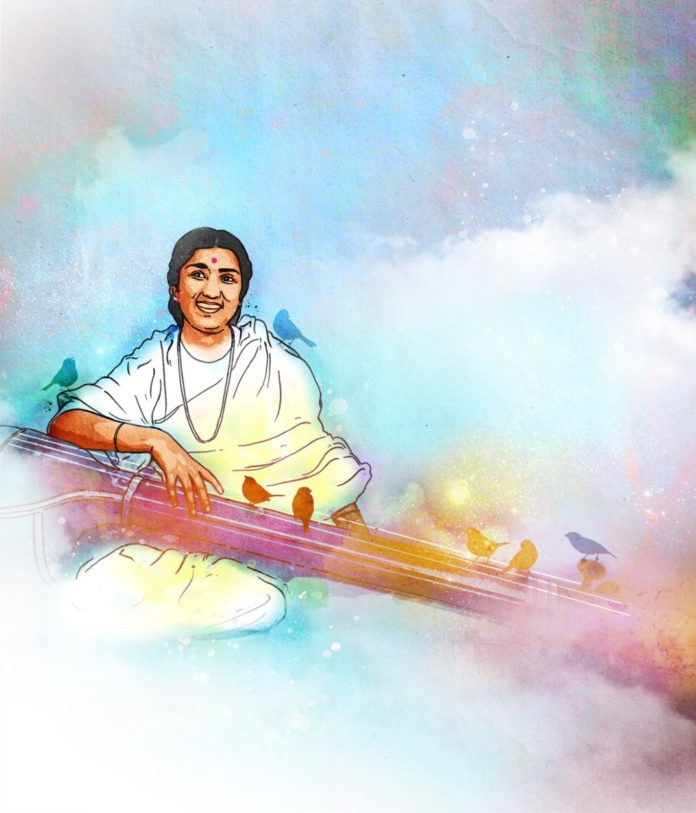A voice dipped in honey, yet charged with emotion, Lata Mangeshkar was a legend. Lyricist and poet Javed Akhtar had once said, “When you are talking about Michelangelo, Beethoven, or Shakespeare, the name says it all. Lata Mangeshkar’s greatness is her name itself. There is no other word that can encapsulate her.”
Lata Mangeshkar was more than just a name, over the years, she became an adjective, an emotion that got so deeply ingrained in the Sub-continental consciousness that her voice became the benchmark of melody and purity.
She was always the voice of virtue. No wonder, her voice inspired Madam Noor Jahan to Dilip Kumar. Or the way Gulzar simply put it for her in the Kinara song, Meri Awaaz Hi Pehchan Hai (my voice is my identity).
She fought for giving playback singers their space under the sun. Before Lata, the line between actor and singer was a blur. The discs featured the name of the character rather than the playback singer. She along with Mohd Rafi gave shape to the culture of playback singing in Hindi cinema. Like Noor Jehan and Suraiya, Lata was also offered acting parts but she wanted only her voice to be heard. And she did become the prima donna of playback singing in no time. From Madhubala to Kajol and Preity Zinta, female actors were considered to have arrived on the scene when they got an opportunity to lip-sync to Lata’s voice.
In the recording studio, none could match the depth and clarity of her voice and the control over the pitch. After listening to Ye Zindagi Usi Ki Hai, the poignant number from Anarkali, Bade Ghulam Ali Khan remarked Kambakth Kabhi Besuri Nahin Hoti (The wretched girl never goes out of tune). It was 1953 and the best of Lata was yet to come.
However, beneath that benign half-smile and muted silks, the resilient Lata was all steel. When producer Shashadhar Mukherjee termed her voice too thin, she worked on her timbre. When Dilip Kumar offhandedly remarked that her voice smelt of dal bhaat, she made sure that she got the nuances of Urdu right. Beqas Pe Karam, the naat in Mughal-e-Azam is a testimony to her command over the language, and Khayyam’s serene Ae Dil e Nadan (Razia Sultan) remained her favourite song.
At the peak of her career, when S.D. Burman made an uncharitable remark, she didn’t work with the master composer for five years. She refused to perform in film award functions until a separate category was created for playback singers in 1959. From 1959 to 1970, she won four Filmfare Awards. Out of these three came when there was no separate category for female playback singers. In 1971, in an unusual gesture, she asked the jury not to consider her to promote fresh talent.
There may not be a moment when somebody, somewhere, is not listening to a song sung by Lata Mangeshkar. It has been so for the last seven decades or so. No singer has captured the imagination of an entire nation like she did.
Music fans may be divided when it comes to choosing their favoritee male singers – some might swear by Mohammed Rafi, others by Kishore Kumar, and some others by Nusrat Fateh Ali or Mahdi Hassan – but the majority of them may pick Lata as the female voice they most want to listen to. Not without reason. Her voice was heavenly, her range wide and her expressions always so soothing.
Today, 6th February 2022, Lata Mangeshkar left the world for her heavenly aboard. Somehow it feels that even the birds, trees and the wind have turned silent. It feels personal, but the nightingale of Indian-subcontinent will always stay ‘Amar’ in our hearts. Heaven above will surely be a very musical place.








